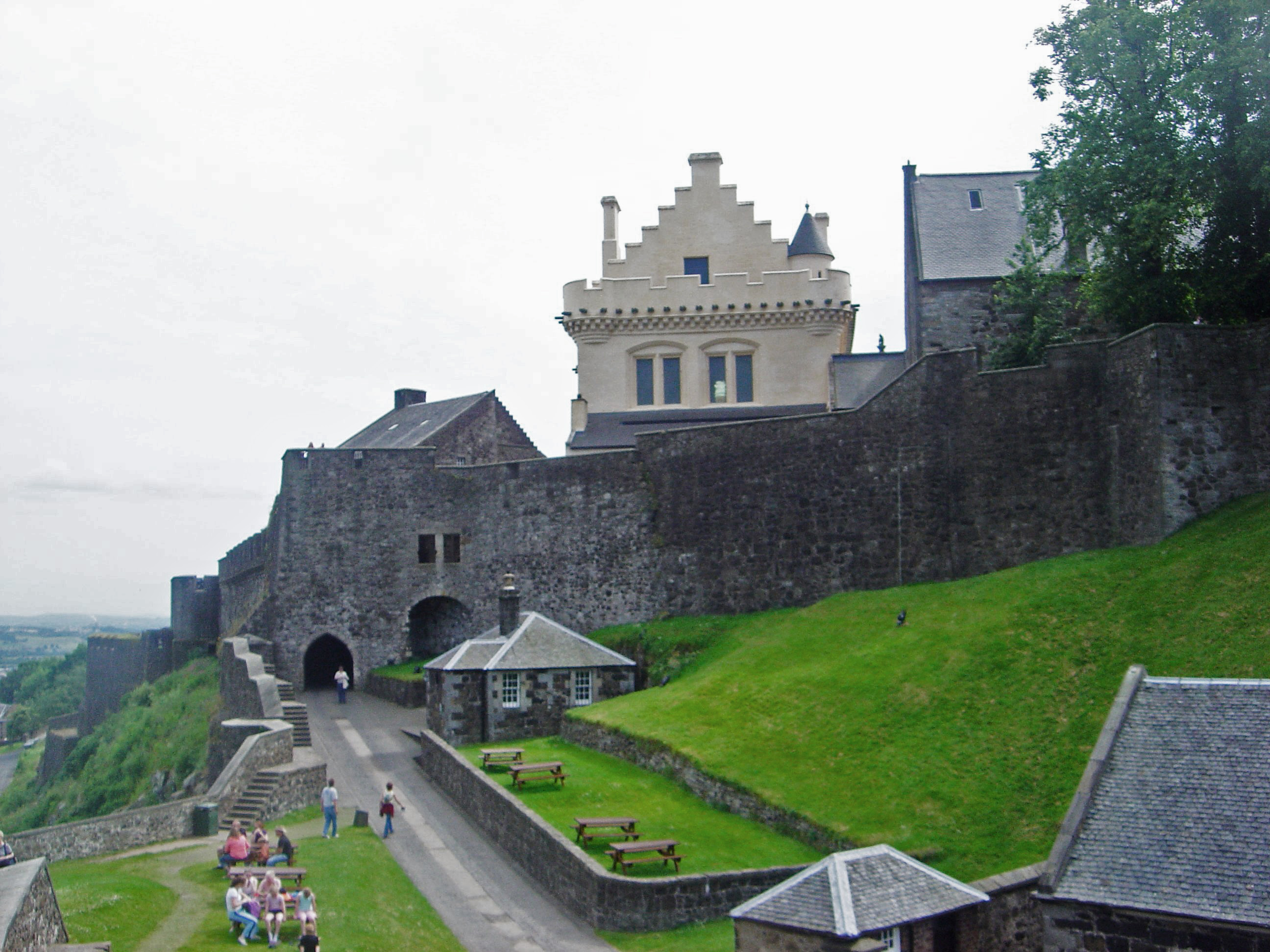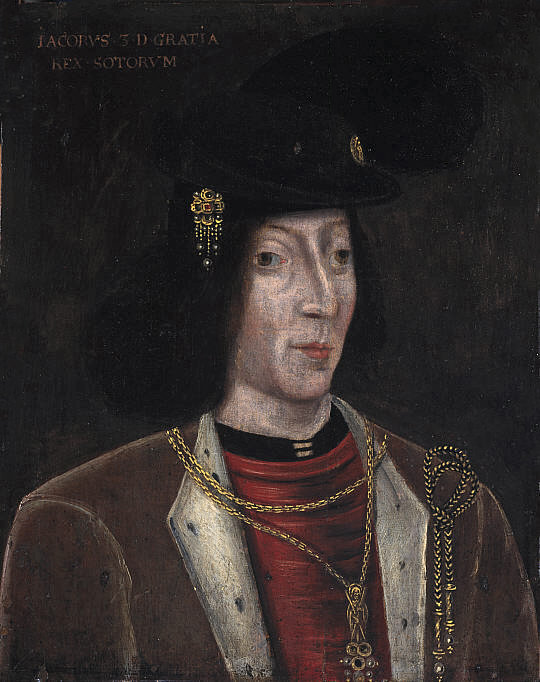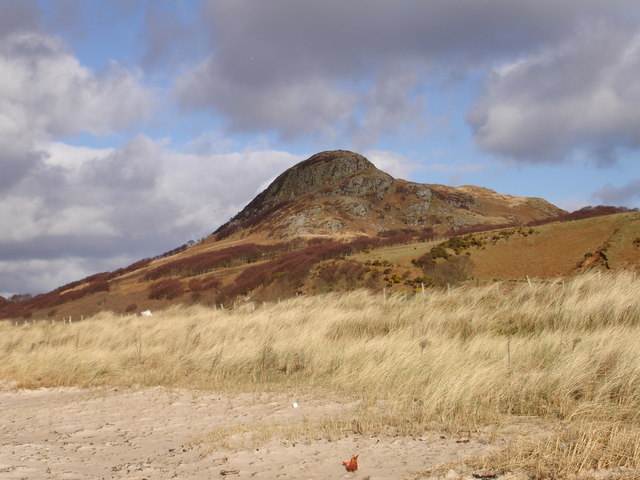|
Lord Of The Isles
Lord of the Isles or King of the Isles ( or ; ) is a title of nobility in the Baronage of Scotland with historical roots that go back beyond the Kingdom of Scotland. It began with Somerled in the 12th century and thereafter the title was held by a series of his descendants, the Norse-Gaelic rulers of the Isle of Man and Argyll and the islands of Scotland in the Middle Ages. They wielded sea-power with fleets of galleys ( birlinns). Although they were, at times, nominal vassals of the kings of Norway, Ireland, or Scotland, the island chiefs remained functionally independent for many centuries. Their territory included much of Argyll, the Isles of Arran, Bute, Islay, the Isle of Man, Hebrides ( Skye and Ross from 1438), Knoydart, Ardnamurchan, and the Kintyre peninsula. At their height they were the greatest landowners and most powerful lords after the kings of England and Scotland. The end of the MacDonald Lords came in 1493 when John MacDonald II had his ancestr ... [...More Info...] [...Related Items...] OR: [Wikipedia] [Google] [Baidu] |
Lords In The Baronage Of Scotland
A Lord in the Baronage of Scotland is an ancient title of nobility, held ''in baroneum'', which Latin term means that its holder, who is a lord, is also always a baron. The holder may or may not be a Lord of Regality, which meant that the holder was appointed by the Crown and had the power of "pit and gallows", meaning the power to authorise the death sentence. A Scottish Baron is below a Lord of Parliament (the Scottish equivalent of an English baron) which is a title in the Peerage of Scotland, while a Lord in the Baronage of Scotland is a noble dignity of higher degree than Baron, but below an Earls in the Baronage of Scotland, Earl in the Baronage of Scotland, which is a baron of still higher degree than a lordship. In the baronage there is only a small number of lordships compared to baronies, whilst earldoms are very rare. While barons originally sat in parliament (along with Lords of Parliament and higher nobility who made up the peerage), all of the peerage, originally, ... [...More Info...] [...Related Items...] OR: [Wikipedia] [Google] [Baidu] |
Hebrides
The Hebrides ( ; , ; ) are the largest archipelago in the United Kingdom, off the west coast of the Scotland, Scottish mainland. The islands fall into two main groups, based on their proximity to the mainland: the Inner Hebrides, Inner and Outer Hebrides. These islands have a long history of occupation (dating back to the Mesolithic period), and the culture of the inhabitants has been successively influenced by the cultures of Celtic language, Celtic-speaking, Old Norse language, Norse-speaking, and English language, English-speaking peoples. This diversity is reflected in the various names given to the islands, which are derived from the different languages that have been spoken there at various points in their history. The Hebrides are where much of Scottish Gaelic literature and Gaelic music has historically originated. Today, the economy of the islands is dependent on crofting, fishing, tourism, the oil industry, and renewable energy. The Hebrides have less biodiversity t ... [...More Info...] [...Related Items...] OR: [Wikipedia] [Google] [Baidu] |
Kingdom Of Great Britain
Great Britain, also known as the Kingdom of Great Britain, was a sovereign state in Western Europe from 1707 to the end of 1800. The state was created by the 1706 Treaty of Union and ratified by the Acts of Union 1707, which united the Kingdom of England (including Wales) and the Kingdom of Scotland to form a single kingdom encompassing the whole island of Great Britain and its outlying islands, with the exception of the Isle of Man and the Channel Islands. The unitary state was governed by a single Parliament of Great Britain, parliament at the Palace of Westminster, but distinct legal systems—English law and Scots law—remained in use, as did distinct educational systems and religious institutions, namely the Church of England and the Church of Scotland remaining as the national churches of England and Scotland respectively. The formerly separate kingdoms had been in personal union since the Union of the Crowns in 1603 when James VI of Scotland became King of England an ... [...More Info...] [...Related Items...] OR: [Wikipedia] [Google] [Baidu] |
Duke Of Rothesay
Duke of Rothesay ( ; ; ) is the main dynastic title traditionally given to the male heir apparent to the Scottish and, later, British thrones. The dukedom was created in 1398 by Robert III of Scotland for his eldest son. Duke of Rothesay is the title mandated for use by the heir apparent when in Scotland, in preference to the titles ''Prince of Wales'' and ''Duke of Cornwall'', which are used in the rest of the United Kingdom and overseas. The title is named after Rothesay on the Isle of Bute, but is not associated with any legal entity or landed property. The Duke of Rothesay also holds other Scottish titles, including Earl of Carrick, Baron of Renfrew, Lord of the Isles, and Prince and Great Steward of Scotland. The current holder of the title is William, Prince of Wales, and his wife, Catherine, is the current Duchess of Rothesay. History David Stewart, Duke of Rothesay, the son of Robert III of Scotland, first held the dukedom from its creation in 1398. After his ... [...More Info...] [...Related Items...] OR: [Wikipedia] [Google] [Baidu] |
James IV Of Scotland
James IV (17 March 1473 – 9 September 1513) was List of Scottish monarchs, King of Scotland from 11 June 1488 until his death at the Battle of Flodden in 1513. He inherited the throne at the age of fifteen on the death of his father, James III of Scotland, James III, at the Battle of Sauchieburn, following a rebellion in which the younger James was the figurehead of the rebels. James IV is generally regarded as the most successful of the House of Stuart, Stewart monarchs of Scotland. He was responsible for a major expansion of the Royal Scots Navy, Scottish royal navy, which included the founding of two royal dockyards and the acquisition or construction of 38 ships, including the ''Great Michael'', the largest warship of its time. James was a patron of the arts and took an active interest in the law, literature and science. With his patronage the Chepman and Myllar Press, printing press came to Kingdom of Scotland, Scotland, the University of Aberdeen and the Royal College o ... [...More Info...] [...Related Items...] OR: [Wikipedia] [Google] [Baidu] |
John MacDonald II
John of Islay (or John MacDonald) (1434–1503), Earl of Ross, fourth (and last) Lord of the Isles, and ''Mac Domhnaill'' (chief of Clan Donald), was a pivotal figure in late medieval Scotland: specifically in the struggle for power with James Stewart, James III of Scotland, in the remoter formerly Norse-dominated regions of the kingdom. His defeat in this conflict led to rebellion against John by his illegitimate son Angus Óg, resulting in the defeat of John's fleet at the Battle of Bloody Bay in the early 1480s. Thereafter and until his death in 1503 John remained an inconsequential figure while, until his murder in 1490, Angus continued to dominate the affairs of Clan Donald. In 1493 James IV brought the Lordship of the Isles to an end. Early life John was born to Alexander of Islay, Earl of Ross and Lord of the Isles, and Elizabeth, daughter of Alexander Seton the lord of Gordon and Huntly. He succeeded to his father's territories in 1449 while a still a mino ... [...More Info...] [...Related Items...] OR: [Wikipedia] [Google] [Baidu] |
Clan Donald
Clan Donald, also known as Clan MacDonald or Clan McDonald ( ), is a Highland Scottish clan and one of the largest Scottish clans. Historically the chiefs of the Clan Donald held the title of Lord of the Isles until 1493 and two of those chiefs also held the title of Earl of Ross until 1476. The Lord Lyon King of Arms, the Scottish official with responsibility for regulating heraldry in that country, issuing new grants of coats of arms, and serving as the judge of the Court of the Lord Lyon, recognises under Scottish law the ''High Chief of Clan Donald''. There are also numerous branches to the Clan Donald and several of these have chiefs recognised by the Lord Lyon King of Arms; these are: Clan Macdonald of Sleat, Clan Macdonald of Clanranald, Clan MacDonald of Keppoch, Clan MacDonald of Glencoe, Clan MacDonell of Glengarry, and Clan MacAlister. There are also notable historic branches of Clan Donald without chiefs so-recognised, these are: the Clan MacDonald of Dunnyve ... [...More Info...] [...Related Items...] OR: [Wikipedia] [Google] [Baidu] |
O'Neill Dynasty
The O'Neill dynasty ( Irish: ''Ó Néill'') are a lineage of Irish Gaelic origin that held prominent positions and titles in Ireland and elsewhere. As kings of Cenél nEógain, they were historically one of the most prominent family of the Northern Uí Néill, along with the O'Donnell dynasty. Some O'Neills state that their ancestors were kings of Ailech during the Early Middle Ages, as descendants of Niall of the Nine Hostages. Two of their progenitors were High Kings of Ireland: Niall Glúndub (from whom they take their name) and Domnall ua Néill. From 1232 until 1616, the O'Neills were sovereign kings of Tír Eógain, holding territories in the north of Ireland in the province of Ulster, particularly around modern County Tyrone, County Londonderry and County Antrim, in what is now Northern Ireland. After their territory was merged with the Kingdom of Ireland and the land was caught up in the Plantation of Ulster, they were involved in a number of events, such as Tyr ... [...More Info...] [...Related Items...] OR: [Wikipedia] [Google] [Baidu] |
Geraldines
The FitzGerald dynasty is a Hiberno-Norman noble and aristocratic dynasty, originally of Cambro-Norman and Anglo-Norman origin. They have been peers of Ireland since at least the 13th century, and are described in the Annals of the Four Masters as having become "more Irish than the Irish themselves" or Gaels, due to assimilation with the native Gaelic aristocratic and popular culture. The dynasty has also been referred to as the Geraldines and Ireland's largest landowners. They achieved power through colonisation and the conquest of large swathes of Irish territory by the sons and grandsons of Gerald de Windsor (c. 1075 – 1135). Gerald de Windsor ( Gerald FitzWalter) was the first Castellan of Pembroke Castle in Wales, and became the male progenitor of the FitzMaurice and FitzGerald Dynasty ("fitz", from the Anglo-Norman ''fils'' indicating "sons of" Gerald). His father, Baron Walter FitzOther, was the first Constable and Governor of Windsor Castle for William the Co ... [...More Info...] [...Related Items...] OR: [Wikipedia] [Google] [Baidu] |
Kings Of England
This list of kings and reigning queens of the Kingdom of England begins with Alfred the Great, who initially ruled Wessex, one of the heptarchy, seven Anglo-Saxon kingdoms which later made up modern England. Alfred styled himself king of the Anglo-Saxons from about 886, and while he was not the first king to claim to rule all of the English people, English, his rule represents the start of the first unbroken line of kings to rule the whole of England, the House of Wessex. Arguments are made for a few different kings thought to have controlled enough Anglo-Saxon kingdoms to be deemed the first king of England. For example, Offa of Mercia and Egbert of Wessex are sometimes described as kings of England by popular writers, but it is no longer the majority view of historians that their wide dominions were part of a process leading to a unified England. The historian Simon Keynes states, for example, "Offa was driven by a lust for power, not a vision of English unity; and what he ... [...More Info...] [...Related Items...] OR: [Wikipedia] [Google] [Baidu] |
Kintyre
Kintyre (, ) is a peninsula in western Scotland, in the southwest of Argyll and Bute. The peninsula stretches about , from the Mull of Kintyre in the south to East Loch Tarbert, Argyll, East and West Loch Tarbert, Argyll, West Loch Tarbert in the north. The region immediately north of Kintyre is known as Knapdale. Kintyre is long and narrow, at no point more than from west coast to east coast, and is less than wide where it connects to Knapdale at the north. Kintyre is the lower Firth of Clyde western coast and protects the Firth from the Atlantic Ocean. The southerly tip of Kintyre is on the North Channel (Great Britain and Ireland), North Channel that separates southwestern Scotland from Northern Ireland. The east side of the Kintyre Peninsula is bounded by Kilbrannan Sound, with a number of coastal peaks such as Torr Mor. The central spine of the peninsula is mostly hilly moorland, the highest point being Beinn an Tuirc at . The coastal areas and hinterland, however, are ... [...More Info...] [...Related Items...] OR: [Wikipedia] [Google] [Baidu] |
Ardnamurchan
Ardnamurchan (, ) is a peninsula in the ward management area of Lochaber, Highland, Scotland, noted for being very unspoiled and undisturbed. Its remoteness is accentuated by the main access route being a single track road for much of its length. The most westerly point of mainland Great Britain, Corrachadh Mòr, is in Ardnamurchan. From 1930 to 1975 Ardnamurchan also gave its name to a landward district of Argyll, which covered a much wider area, including the districts of Morvern, Sunart and Ardgour. Geography Strictly speaking, Ardnamurchan covers only the peninsula beyond the villages of Salen (in the south) and Acharacle (in the north), but nowadays the term is also used more generally to include the neighbouring districts of Sunart, Ardgour, Morvern, and even Moidart (which was part of the former county of Inverness-shire, not Argyll). Ardnamurchan Point, which has the Ardnamurchan Lighthouse built on it, is commonly described as the most westerly point ... [...More Info...] [...Related Items...] OR: [Wikipedia] [Google] [Baidu] |







